The 9th was a Saturday and after my customary lunch at the Golden Pita I went home and got my camera out. It had just rained a bit and I thought I would go and get some water-on-flowers shots. Accordingly, I put my macro lens and lights on the camera, and went walking down the quay.
I started with some shots of a fuschia; this one was hanging off the side of a hanging flower basket. |
|
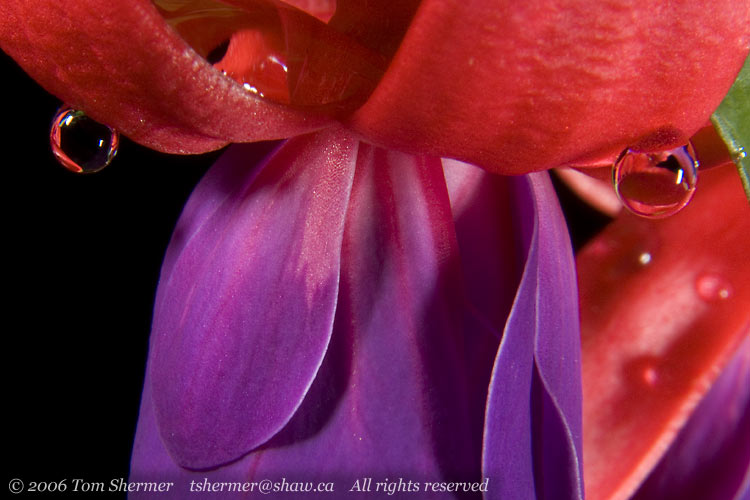 |
| Next, I poked around some flowers near the park with the submarine. This one, I think, was a dahlia. |
|
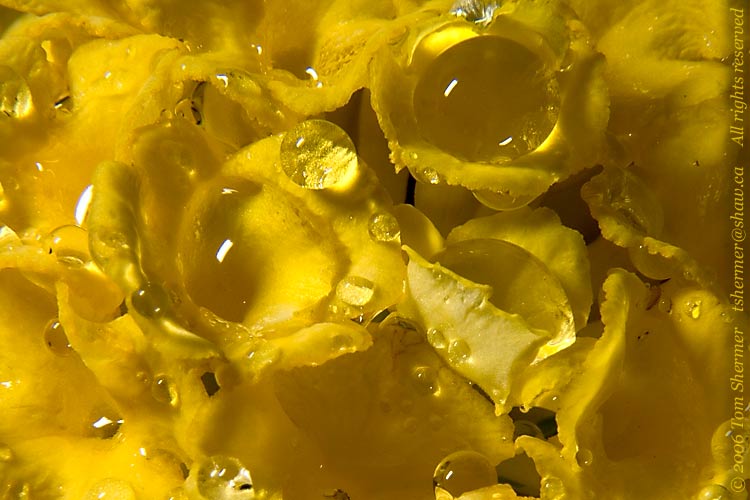 |
I didn't go any farther than that, though, as I wasn't sure if the rain might return or not, and I didn't want to get caught far from home. Since I had my macro lens on, I started to look for small things.
Small things include spiders, insects, and snails, so if you're not a big fan of these, the rest of this entry won't hold much for you. You might consider bailing if you're especially squeamish.
The first small thing I found was an orb-weaving spider. There are lots and lots of spiders around where I live, so this was no surprise. |
|
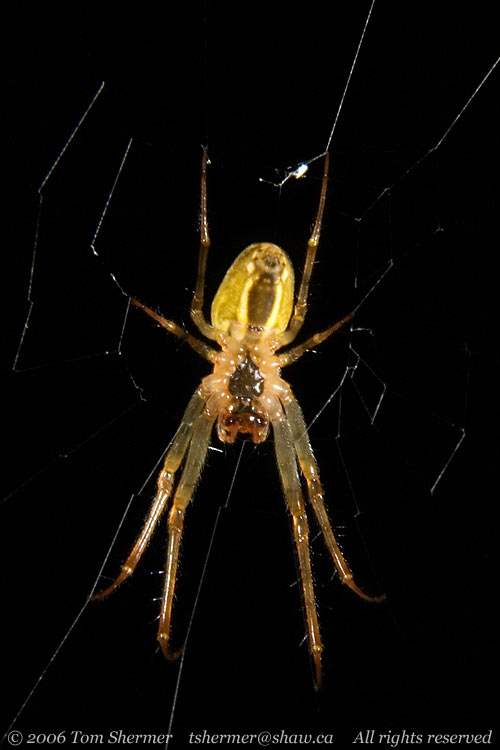 |
| But this next little fellow was a surprise. I found this guy on a handrail on some stairs to my building. Best as I (and the people whom I consulted on the matter) can tell, this is a Bagworm Moth (a moth in the family Psychidae). |
|
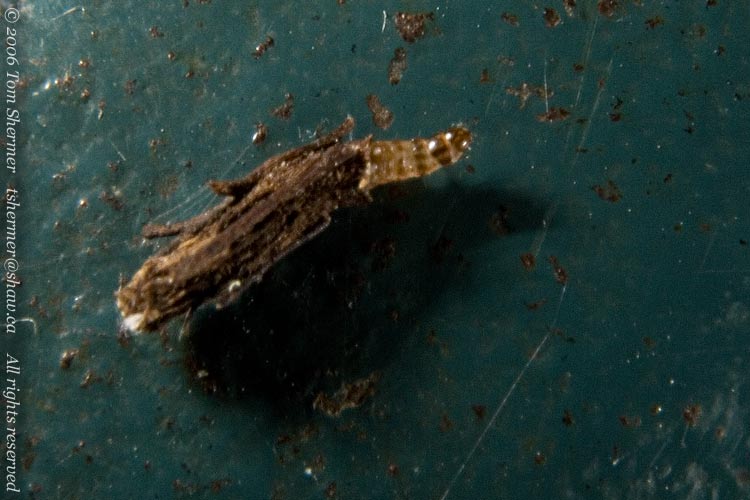 |
He's in the bagworm (larval) stage, of course. In that stage, a bagworm carries around a bag or casing on its rear, which it decorates with stuff that it finds, like dead leaves, soil, and sticks. The decoration serves as camouflage.
Bagworms cases are fairly unique to each species, but the larvae are not particularly distinctive, so it's often easier to identify a bagworm by examining the case rather than the animal. But that's still way beyond my skills, so I let this little guy be, and went looking for other stuff.
Scanning the roses by the stairs, I found a insect perched on one of them. It was a midge (a fly in the family Chironomidae), and his feathery antennae marked him as a male. So here, meet Mr. Midge. |
|
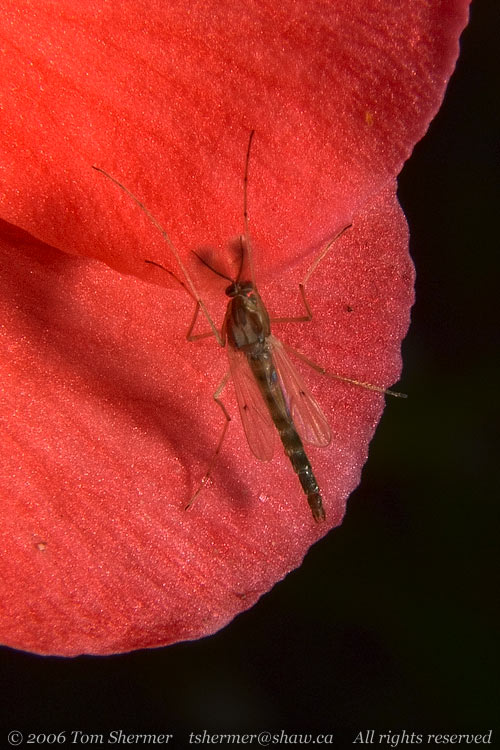 |
To me, midges look a bit like mosquitos (which are also classified as flies). Anyhow, the Mr. was the first midge that I've ever identified. I was kinda proud.
While I was hanging around the roses, I figured I should take a few shots of the flowers without bugs, just in case someone might be interested in such a thing. |
|
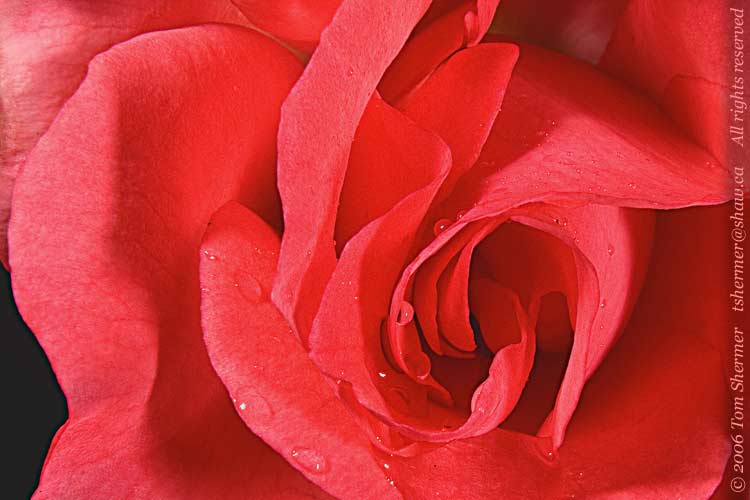 |
| But I soon found an interesting little bit of life history going on in the nearby bushes. A spider had caught a fly of some sort (judging by the legs, another midge, or a mosquito) in his web, and had just come over to dispatch him. |
|
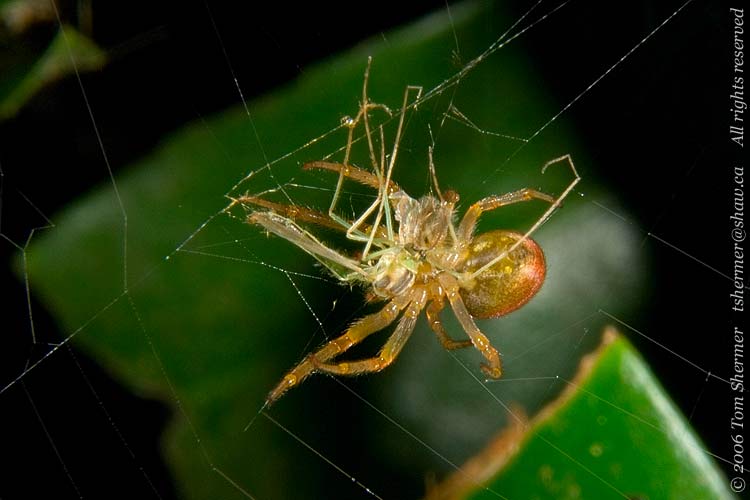 |
I took a few photos of that, but there wasn't really a lot of movement going on there, so the photos all look about the same.
The snails were much more active. Here's one going from one leaf to another. |
|
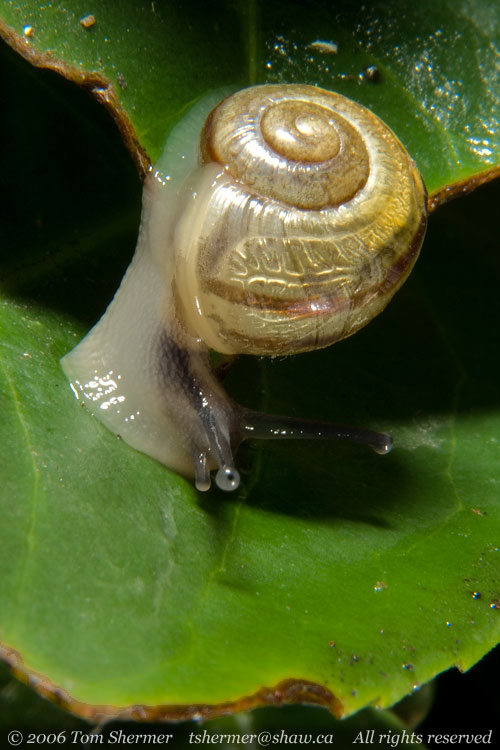 |
It seemed like an amazing athletic feat to me...somehow this amorphous little animal accomplished the entire maneuver without having that big ol' shell fall on his head. He even made it look smooth...he was probably trying to impress the ladies.
Soon I started finding snails all over the bush I was standing next to. Here's one headed the other way. |
|
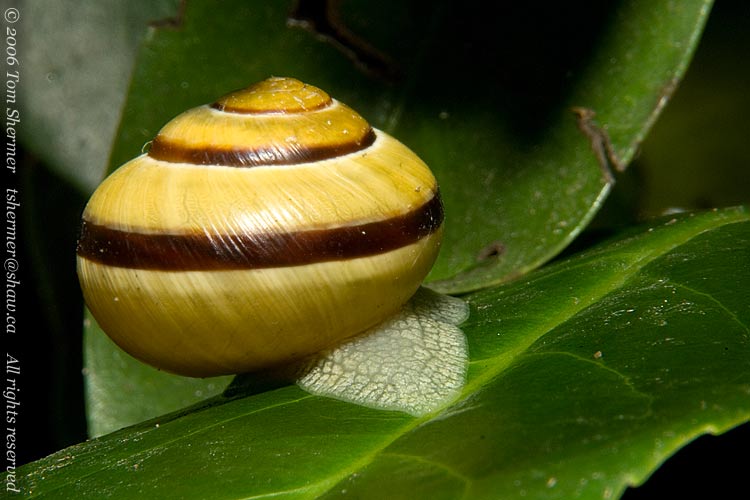 |
| And here's a smaller one out at the end of a leaf. |
|
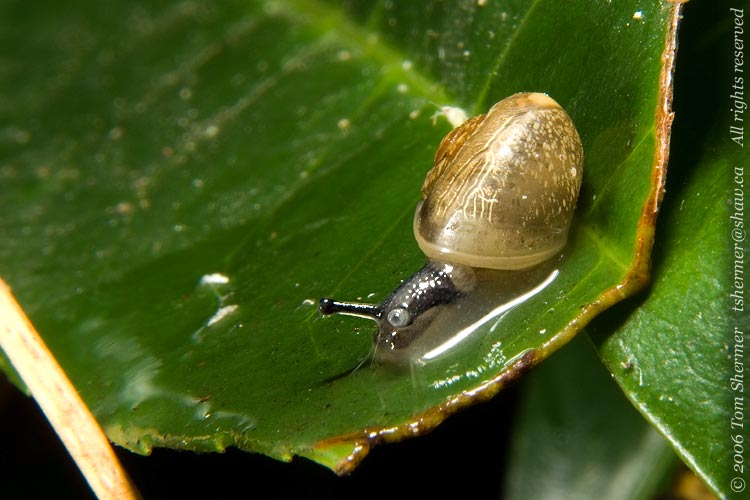 |
| I think all of these snails are Grovesnails (Cepaea nemoralis), but I'm not completely certain about the little ones. I decided to pick a little one up to see if the underside had any detail that would help in their identification. |
|
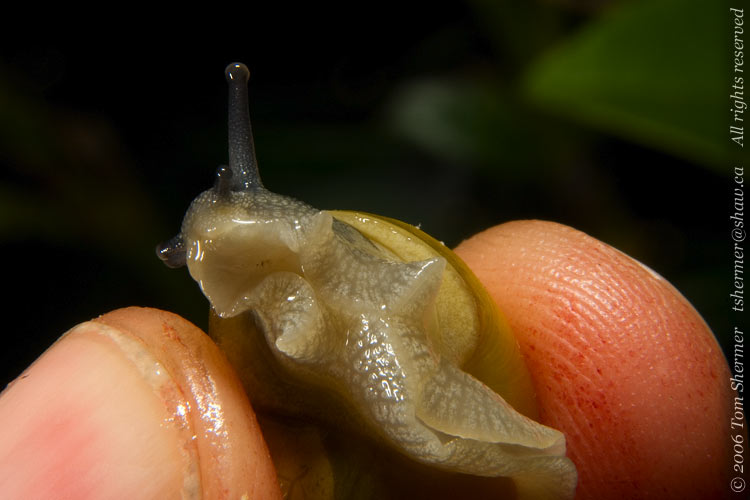 |
There are structures visible at the entrance to a snail's shell, such as the apetural lip and the parietal denticle, that help in identifying them, but you can't really see those in this photo, as the animal is still outside of the shell, blocking our view of the entrance. He didn't seem to want to withdraw all the way.
After a couple of minutes, I tired of waiting for him, supporting my bulky camera and lights in one hand. So I put the tyke back on the bush, making sure he got a good grip, before turning my attention back to a bigger fellow. |
|
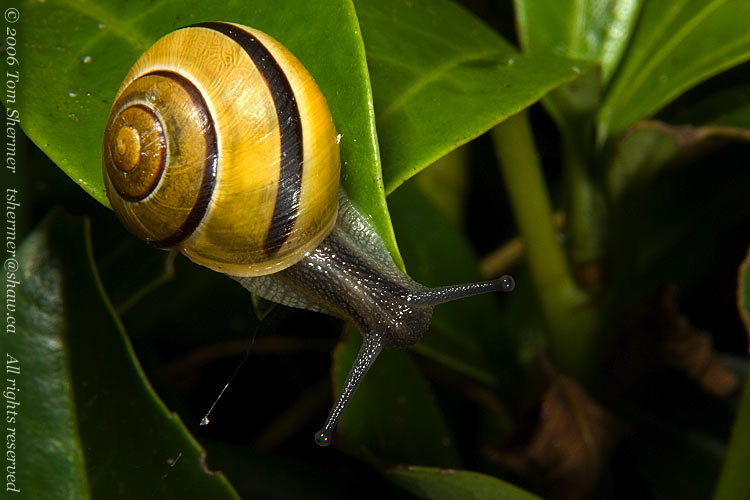 |
| I think I just like snails, and all the fine detailing they have, such as the grooves on the shell, the little pits in the surface of the animal, and the eyes and eyestalks. |
|
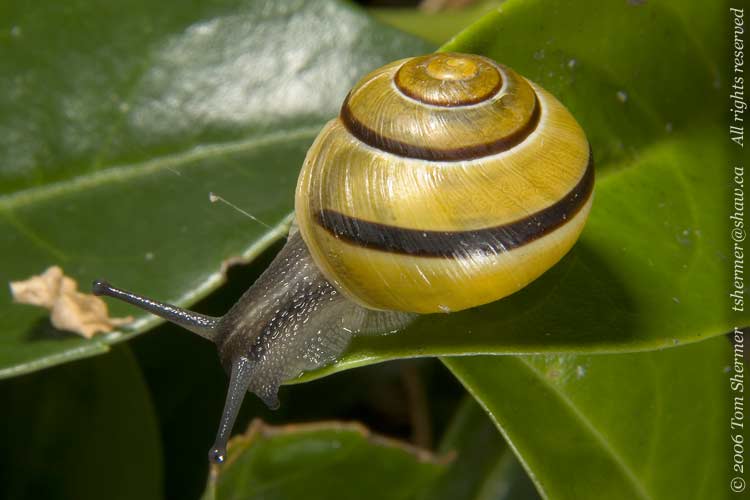 |
| Another critter I found a bunch of on the same bush was the Multicolored Asian Ladybug (Harmonia axyridis). This next one's a larva. I was happy at how close I was able to get to him with my macro lens. |
|
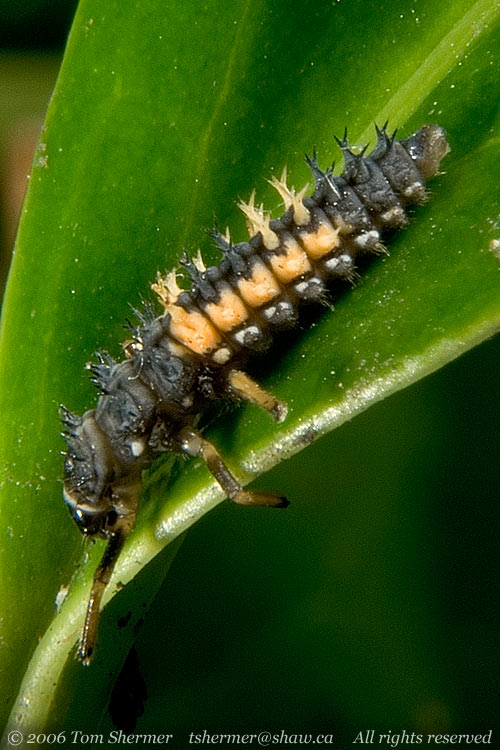 |
| This next lady was an oddity, though. She was clearly H. axyridis, but her wing covers were misshapen and didn't seem to close. |
|
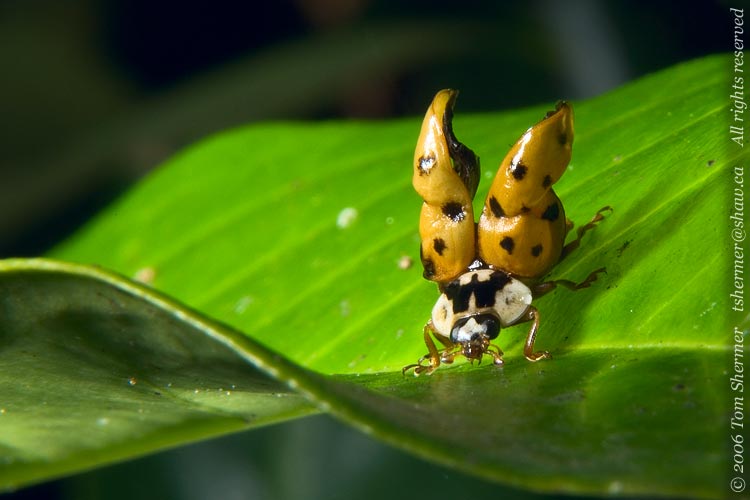 |
Something had clearly gone wrong in this beetle's development—either a genetic mutation or some environmental problem (like something toxic hanging around, or some injury to the pupa).
Here you can see that her wings look similarly affected, crumpled up underneath the covers. |
|
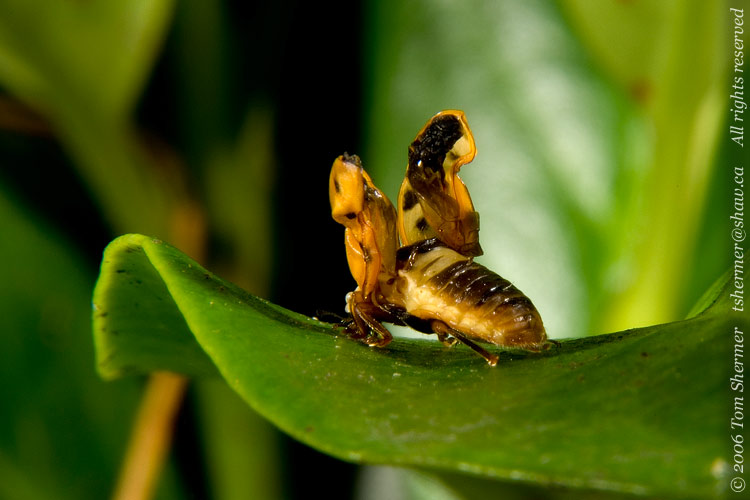 |
Poor little lady; I was surprised she was still out there, doing her thing. The ability of organisms to adapt and survive can be pretty amazing.
After a little more looking around, I found a little snail making its way across a wide expanse of some creased and grooved pink surface. I wondered just what the pink stuff was made of, and how the snail got there. |
|
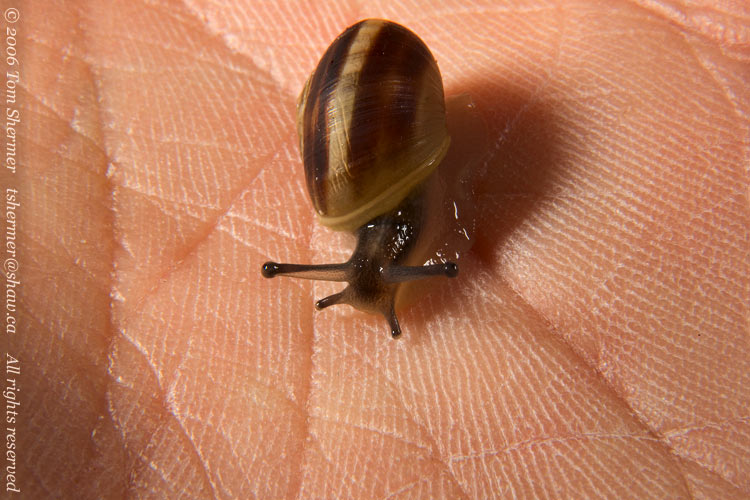 |
| Being alert for small movements, I saw an ant scurry out to the end of a leaf, and was able to get focussed and to get a few shots of it before it made it back underneath other leaves to the stem. |
|
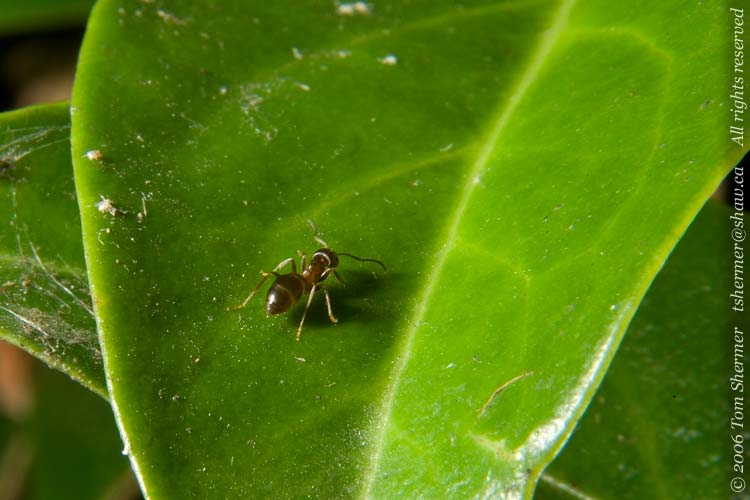 |
| On the other side of the bush, I found another lady with a problem. This one's wings were dragging behind. |
|
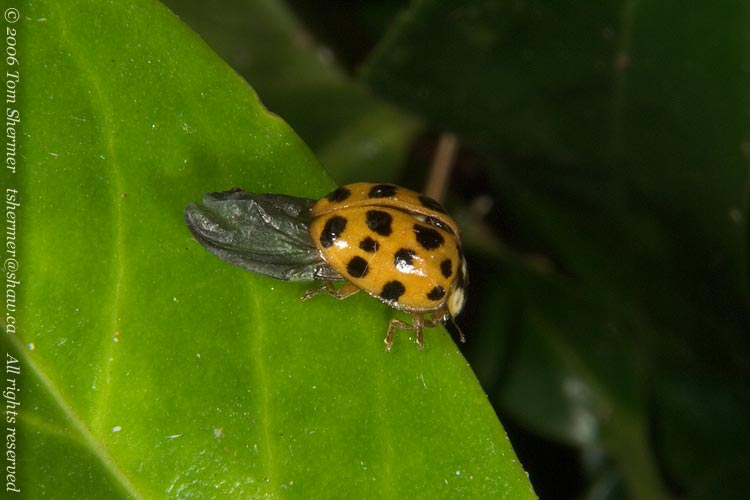 |
I didn't actually turn the two troubled ladies over and check their lot numbers, but I wouldn't be surprised if they were from the same batch. Maybe it's time for someone to have a word with the guy upstairs about setting better standards for ladybug creation.
On the other hand, he seems to be doing a good job with flies lately. All of them that I've been seeing have really been top-notch. Take this next fellow, for instance. |
|
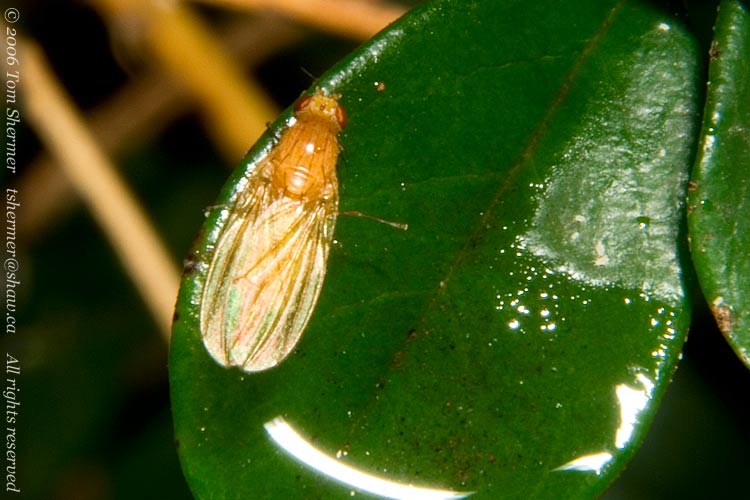 |
He's got a nice, glossy orange body, shiny wings, and red eyes. Quite the fine specimen, he is. I think he's a lauxaniid fly of some sort, mainly based on body and eye color and the details of his antennae. I'd never seen a fly that was so orange before...flies are such a diverse bunch.
Speaking of which, here's another finely-formed fly, sporting a brown-and-grey body, dark legs, yellow feet, a white face, and rufous eyes. My consultants couldn't be sure on this one, but the best guess is that this here's a Tiger Fly, in the genus Coenosia. |
|
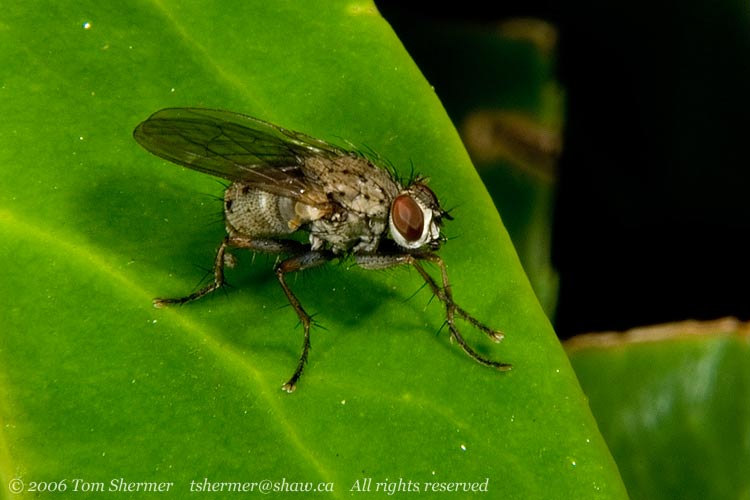 |
| My next discovery on the bush was an interesting cocoon of some sort. It's got a circular interior, with thick walls and a thin covering layer. It seemed too big for anyone's pupa, and so it most probably holds a clutch of eggs. Someone who would know much better than I had a look at the photo and suggested that it's the work of a spider...and that the spider is probably in there, guarding the eggs. |
|
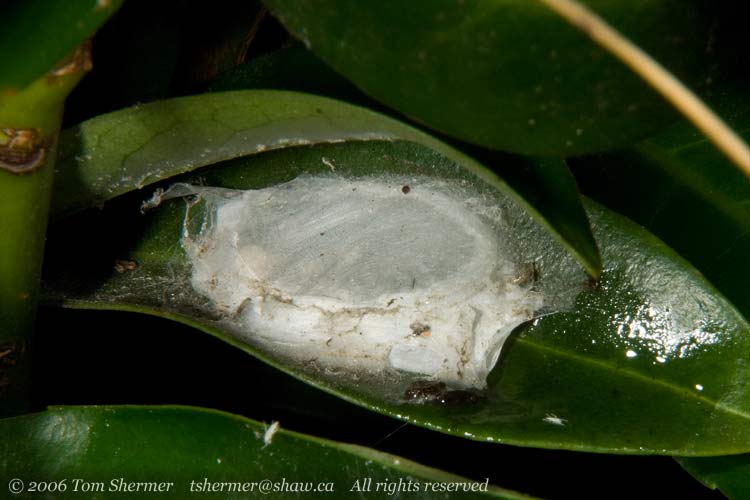 |
One day, a bunch of spiderlings are going to crawl out of that thing...that would be neat to see.
I'll leave you with one last photo from the bush. This one shows a midge hiding on the underside of a leaf, waiting to jump on some unsuspecting prey. I don't think a snail is what he had in mind, though.
|
|
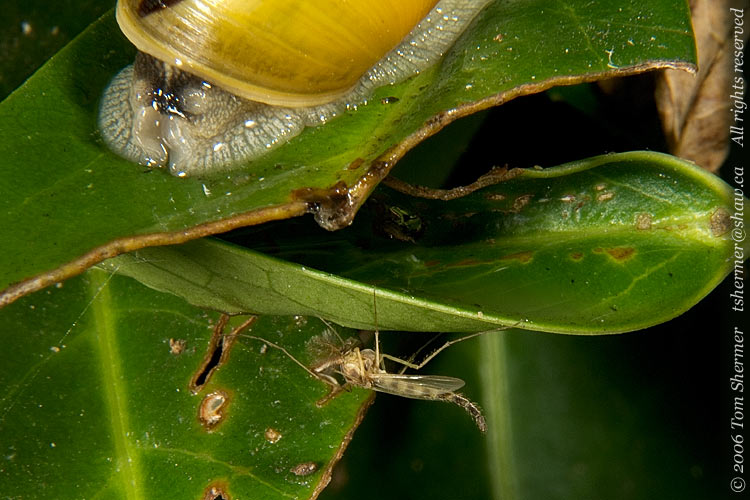 |
So I guess my little wet-flower-hunting expedition had unexpectedly turned into a bug- and snail-fest. It was pretty neat seeing all of these different bugs and snails all on the bushes in one little area.
Doing flash photography had also allowed me to work later than I normally do. This would prove useful over the next several months, when most of my daylight hours were spent at my day job. It's too bad my day job isn't more of a night job, so I could have all the daylight for photography.
Of course, maybe if I got up in the mornings I'd have more daylight to work with. But it probably wouldn't be healthy to go overboard like that.
Chillin' with the Chironomidae,
Tom
|
|